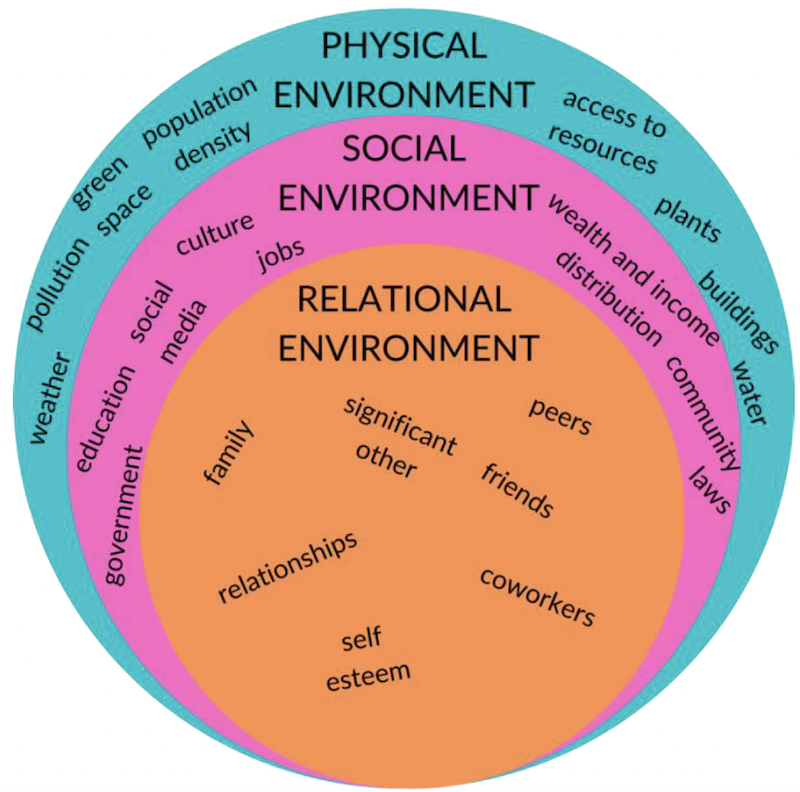What is Sex Positivity?
Sex positivity, or being sex positive, means having positive attitudes about sex, sexual identity, and sexual behaviors (Ivanski & Kohut, 2017). Being sex positive means being open to thinking and talking about sexual interest, pleasure, and decision making in a non-judgmental and confident way. Check out Salt-N-Pepa's take on what sex positive is.
In the sections below, we cover different aspects of sex positivity like understanding the sex response cycle, what makes someone sex positive, consent, communication, and healthy relationships. The information below will help you learn what sex positivity is and begin to discover what being sex positive could mean and look like for you.
What is the Sex Response Cycle?
The sex response cycle is the bodily reaction that you go through during a sexual experience. Everyone responds differently during sex (Georgiadis & Kringelbach, 2012) and by knowing this, you may be able to think more positively about different sexual experiences, including your own. More information about the sex response cycle.

Where do sex attitudes come from?
Like most other attitudes we hold, our experiences now and growing up impact our attitudes toward sex. The physical, emotional, and social settings where we live shape who we are (de Vries et al., 2015) and impact how we feel about and view sex. Thinking about how we learned about sex can help us understand the attitudes we have toward sex. Here are some things that influence how we experience and view sex to help you notice your own feelings about sex:
- Your own body (physical factors): Each body works differently during sex. Things like the food we eat and how we handle stress impact how our body feels and sexually performs (ODPHP, 2020). The way we think and feel about our body can influence how we think about sex. Being aware of how your body feels and how you feel about your body can help you be more aware of your attitudes toward sex.
- Your own feelings (emotional factors): Our feelings—even the non-sexual ones—impact how we think about sex. For example, people are less likely to enjoy sex when they are sad or stressed (Waite & Joyner, 2001). The way you feel about your previous sexual experiences can also make it hard to engage in new and healthy sexual relationships (Barkder & Galliher, 2020). If you or someone you know is struggling with feelings from past experiences, there is help available which can be found in the resources within the consent section below.
- The people around you (social factors): How you view sex can be affected by those around you and the sex education you received. Think about the messages you were given by sex educators. Were they positive and inclusive? Another social factor that impacts the way we think about sex is social media (e.g., Twitter, Instagram, Facebook, Snapchat etc.), television, and music (Brown, 2010). Media often shows narrow ideas about sex in a way that is not realistic and doesn’t show the most positive parts of real sexual relationships (Brown, 2010). Few of these unrealistic relationships are sex positive or inclusive. Think about the relationships you see in your favorite TV show or online. Are they promoting sex positivity?
Additional resources about influences
What about Consent?
Being sexual with other people can be intimidating, but being sex positive can help it be a little less scary. Healthy sex can happen in a safe way with consent and respected boundaries (Haney, 2020), all of which contribute to sex positivity. Consent is an agreement to participate in a sexual activity (RAINN, n.d.). It is important to be able to give and receive consent for any type of sexual contact, as sexual contact without consent is rape (Planned Parenthood, n.d.). Consent is more than just saying “yes” or not saying “no”, it is enthusiastic and given without guilt. Asking for and giving true consent is part of being sex positive, and can build positive sex attitudes. Learn more about consent or sexual assault from Planned Parenthood and the Utah Women & Leadership Project.


How can I be Sex Positive in a relationship?
Sex positivity is developed on your own and is something that plays a role in your relationship with yourself and others. Being able to recognize and talk about your own sexual likes and dislikes, such as where and how you like to be touched, can help increase your sexual pleasure and satisfaction (Herbenick et al., 2019). Sex positivity can also help with openly discussing a partner’s likes and dislikes and understanding that your partner experiences sex differently than anyone else. This type of open and positive communication helps to fulfill sexual needs (Georgiadis & Kringelbach, 2012). Ask your partner about their thoughts on sex and see if you have different ideas about sex positivity.
Additional Resources
Sex Positivity
Talking about Sex
Characteristics of Sexually Healthy Adults
Welcome to Sexplanations
LGBT and Sexual Health
What is Sexual Health
What Does Sex Positive Mean?
Sex Response Cycle
What Are the Four Phases of the Sexual Response Cycle?
Current Research on Sexual Response and Sexual Functioning Among Lesbian Women
Influences
Mass Media Influences on Sexuality
Determinants of Health



